AI is everywhere right now – from ChatGPT writing meal plans to AI integration in wearables. But when it comes to fitness, does technology help and how? Understanding where AI fits into the future of training, the ethics behind AI-driven fitness, and why real human coaches aren’t going anywhere can help set you up for success in a quickly developing fitness frontier.
AI and Robots in Fitness
AI and the impact it’s having on the fitness world is quite the buzz right now. Search “AI and fitness” and you’ll find countless articles singing its praises: how it’s revolutionizing motivation, improving accessibility, and more. Near future group fitness instructors might just be robots.
Right now, AI is shaping fitness in two significant ways: through collecting and tracking data on wearable fitness devices that give you real-time feedback on your performance, recovery, and overall health metrics from heart rate and sleep quality to stress levels and calorie burn. And as personal trainers that write your programming, whether it’s ChatGPT or a screen trainer you hang on your wall. The technology is evolving quickly, which means you need to get savvy with the benefits and limitations of the technology.
The Ethics of Using AI For Fitness
AI tends to inherit biases to form their training data that are generic and for the general population, which can generally lead to poor recommendations for the specific individual it’s coaching. In an AI fitness study, researchers found that AI programming doesn’t offer the complexity and adaptability required for advancing health and fitness goals nor does it offer any value in creating long-term fitness plans. The study concludes that the value of human expertise for fitness programming cannot be understated.
If you follow AI-generated programming blindly, you risk ending up with a plan that falls flat and wastes your time, or worse, sets you up for injury. Inaccurate or incomplete data can lead to faulty predictions and recommendations, which in the fitness landscape, could mean the difference between a successful workout regimen and a risky, ill-advised one.
Another ethical dilemma to consider before you ask AI to program your next mesocycle, is data privacy. Telling AI your specific and private health data etc. to get the best possible program you can means that all the personal information you share is not kept private. AI has no ethics or morals around privacy, and the software itself is constantly collecting the information you give it. Some of these data concerns include:
- Collection of sensitive data
- Collection of data without consent
- Use of data without permission
- Unchecked surveillance and bias
- Data exfiltration
- Data leakage
Why Human Trainers Still Matter in an AI-Driven Fitness World
Studies comparing AI and human trainers in fitness programming highlight both advantages and limitations of AI use. AI offers cost-effective and therefore more accessible programming. The truth is, any program that allows you to stay consistent at the gym with an actual plan is better than not having one. However human trainers are drastically better at programming, providing real-time, nuanced feedback, motivation, and better support for injury prevention. In essence, humans still reign supreme in fitness training without question, and will likely always be the preferred choice.
The Value of Real-Time Form Corrections and Feedback
The future of fitness is being shaped by AI and its rapidly expanding capabilities, especially the emerging ability to sense movement patterns and deliver real-time feedback on form. Tonal, Tempo, and Peloton are examples of platforms using these form detections. The problem is that AI is not nuanced in its realtime feedback and will likely never be. For example, it can tell that your knees cave in but can’t explain why or provide individualized fixes for the issues. Even as AI advances, it lacks the nuance to understand:
- Context: Why someone’s moving a certain way
- Modifications for injuries, fatigue, pain, and the complexities that come with individual options for those adjustments
Another example of realtime feedback is that Whoop, Oura Ring, and other wearables use machine learning to detect trends over time and suggest when to push harder or back off. Some tools also predict injury risk based on fatigue and overtraining markers. This feedback is in its early stages and will continue to get better over time, and can be used as a tool to get a better sense of when it is or isn’t appropriate to train. However, AI doesn’t factor in psychological readiness, which is arguably as equally as important of a variable.
If you are a performance based athlete, understanding trends your wearable tracks is a great tool to help you program your workouts so you don’t overtrain. However, the recreational athlete might not even need to use these tools for programming. It’s most optimal to be consistent with your workout routine, which means not letting your Whoop decide when you can and cannot workout. If you have a medical concern that needs to be accounted for in your training, you need a personal trainer to program appropriately.
Accountability and Motivation Beyond Fitness Apps
One arena that AI will undoubtedly never be better than humans at is accountability and motivation. Having access to talk to a coach about your training is far more important than you realize, and it’s scientifically proven to be a big part of the reason why you continue to show up.
Both trainers and gyms offer something AI can’t replicate: genuine rapport and community. There’s no real-time accountability with AI that feels authentic—because, at the end of the day, it’s a robot. A good trainer cares about you on a level no algorithm can match. And if yours doesn’t, it might be time to find one who does.
Having a human with you in real-time is the built-in accountability to push yourself further, adjust a movement to prevent injury, or try something completely new with clear, specific instructions. Not to mention, the more time you spend with a trainer, the better they understand your strengths and weaknesses, and the more they are able to tailor your programming to hit exactly what you need to see gains. In turn, this makes you more knowledgeable about your own body, and more invested in your training.
Can you Combine AI & Fitness for Your Routine?
In fitness, and arguably in every area of AI usage, it’s wise to remember that AI is a tool, not a replacement. Meaning, if you are using AI for programming for financial reasons, make it a priority to eventually hire a trainer. It might mean adjusting your budget, like spending less on coffee or eating out less to cover the cost.
However, if you have a wearable device, you are technically already combining AI into your fitness routine. You can educate yourself on the metrics your wearable tracks and what that means. Heart Rate Variability (HRV) is a great metric to track. Understanding the data your wearable spits out is a great way to get a better picture of your overall health and how your fitness routine contributes to it, or might need to be adjusted.
If you’re a fitness coach, learning how to integrate AI into your business is a great idea. You can use AI to automate repetitive tasks like content idea generation, questions about generic customer personas and motivation, generating baseline workout templates, quick math tasks, and more. This way, you as the trainer, can focus on deep client engagement and custom programming. Only you truly know your clients and what works for them. Your expertise remains key.
What’s Next? The Future of Artificial Intelligence in Fitness
In the next decade and beyond, AI will get better at personalization and real-time feedback. You can also expect smarter wearables, AI-powered recovery tools, and automated form analysis.
AI literacy is important from both a professional side and a consumer side. Understanding the limitations of AI cannot be overstated. There are many models and versions and they do different things. It’s important to learn HOW these models work, how they are trained, and what their limitations are. It’s also important to understand data security risks and how to protect valuable information when using AI.
We need to be especially cautious when applying AI tools with marginalized communities and special populations who benefit from a more informed, personalized approach. AI algorithms rely heavily on “big data” biometrics, imaging, and other quantitative inputs, but often fail to account for “small data,” such as social determinants of health, transportation access, food security, or work schedules. These contextual factors significantly influence health behaviors and outcomes, yet remain outside most AI models. Numerous studies have shown that this gap can lead to biased or less effective interventions. If you’re a trainer, you have an ethical responsibility to use AI thoughtfully, ensuring it complements rather than replaces human understanding and equity-focused care.
However, one thing won’t change: fitness will always need a human approach.
Want to learn more? Listen to episode 253 of the Stronger Than Your Boyfriend Podcast: Using a Robot for Fitness – Future of AI and Fitness



